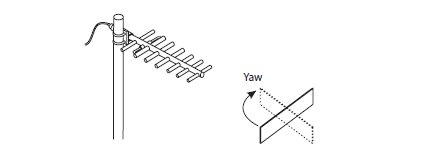Pitch, Yaw, and Roll – Positioning RFID Tags
Introduction
Previously, our article 6 Factors That Affect RFID Read Range discussed how each component of an RFID system affects its overall performance. Regarding RFID tags specifically, we talked about tag SOAP — Size/Orientation/Angle/Placement — and each factor's effect on obtaining the maximum read range from any given RFID tag.
In this article, we'll focus on three aspects of orientation and angle — pitch, yaw, and roll.
Pitch, yaw, and roll figure more prominently in systems using linearly polarized antennas. Circularly polarized antennas help to negate issues associated with roll; however pitch and yaw may still pose problems.

Pitch is when the tag rotates along the x-axis.

Yaw is when the tag rotates along the y-axis.

Roll is when the tag rotates along the z-axis.
Understanding how an RFID tag’s pitch, yaw, and roll affect your ability to read the tag is key to achieving maximum readability in almost any RFID system. Ideally, the RFID tag's antenna should be aligned with the plane of the reader's antenna so that the tag is absorbing as much RF energy as possible. The more severe the angle (pitch, yaw, or roll), the more the RF energy "washes" over the tag (vs. being absorbed) - thus, making the tag less effective and diminishing its read range (if it is even read at all).
Depending on your system setup, sometimes adding antennas to cover the read zone from additional angles or switching to an omni-directional tag solves the problem. Thorough testing is key to determine just how much pitch, yaw, and roll will affect your application as well as what you can do to mitigate any negative effects.
Conclusion
If you have any questions about this or any other RFID topics, please contact us or leave a comment below.
To read more about RFID tags, check out the links below!

